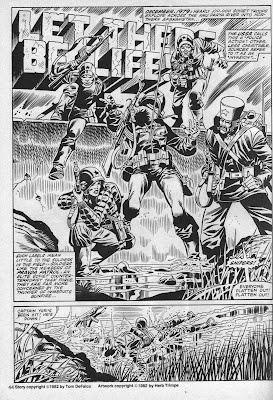3 / 5 Stars
Fred Mustard Stewart (1932 – 2007) wrote a number of novels during the interval from the late 60s to the late 90s. Some of these were sf, albeit more in the spirit of popular fiction than ‘serious’ efforts to explore the genre.
‘Star Child' is set in the Summer, 1974, in the hamlet of Shandy, Connecticut. The heroine, a young woman named Helen Bradford, is a French teacher at Shandy Prep, the exclusive boarding school that serves as the main economic and social anchor for the hamlet. Helen’s husband Jack also is a teacher at Shandy Prep, as are the members of their immediate circle of friends and acquaintances.
One warm night, Helen has an extraordinary dream in which an angelic – looking boy, called Star Child, tells her he is projecting his thoughts to her sleeping mind from his home planet orbiting the star Tau Ceti, 12 light-years from Earth (!). Star Child tells Helen that he is ready to supply the human race with the technical specifications for creating cheap and abundant fusion energy; this revelation will provide the Earth with a solution to the Energy Crisis, and usher in an era of prosperity and peace like none the planet has ever seen.
However, other residents of Shandy – including Jack Bradford – have received dream messages from another entity, this one named Raymond. Unlike Star Child, Raymond is malevolent, and seeks to coerce people into committing murder……as an act of worship to the Godhead of Raymond !
As the Summer unfolds, both Star Child and Raymond struggle to convert the residents of Shandy to their respective causes……and Raymond is winning, for his apostles have begun to carry out a wave of ritualistic killings - !
Only Helen is able to resist the demands of Raymond, despite the horrifying hallucinations he transmits to her sleeping mind in an effort to beat her into submission. But neither Star Child nor Raymond are able to conceal the truth of who they really are from Helen……and when she learns this truth, the fate of the Earth comes to depend on her, and her alone……..
‘Star Child’ is one of Stewart’s novels that is at heart a pot boiler, with some sf and horror elements stirred into the mix. This is evident in the opening chapter, in which a young woman is murdered after participating in ritualistic sex with an acolyte of the Cult of Raymond.
Later on in the novel, the reader will encounter various sf tropes, including telepathy, Eco-catastrophe, and Mind Control. To his credit, author Stewart comes close, but never crosses the line, into silliness, and this combination of restraint and gimmickry keeps the narrative moving along at a fast clip.
Summing up, if you’re looking for an easily-digestible Beach Read with a good dose of 70s pop culture - including vintage Energy Crisis - inspired alarmism - then ‘Star Child’ will satisfy.
Summing up, if you’re looking for an easily-digestible Beach Read with a good dose of 70s pop culture - including vintage Energy Crisis - inspired alarmism - then ‘Star Child’ will satisfy.


























































































